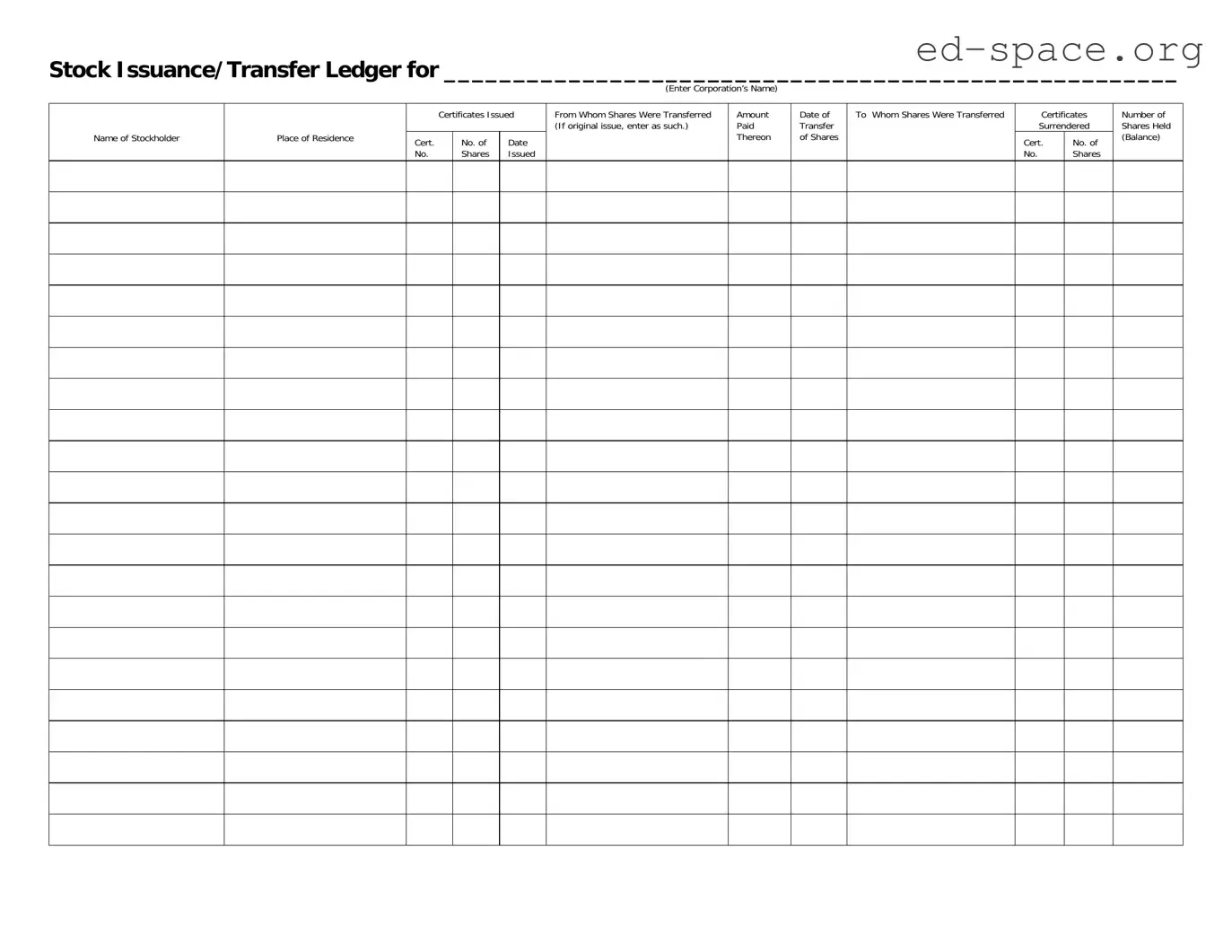What is a Stock Transfer Ledger, and why is it important?
A Stock Transfer Ledger is a document used by corporations to keep track of the issuance and transfer of its stock shares. This ledger provides a detailed record, including the name of the stockholder, their place of residence, certificate numbers, the number of shares issued, payment amounts, and details regarding the transfer of shares. It is crucial for maintaining an accurate history of share ownership and ensuring the company's compliance with legal and financial regulations. Additionally, it assists in the management of stockholder information, which is essential for corporate governance and communication.
How do you fill in the "Name of Stockholder" field?
In the "Name of Stockholder" field, enter the full legal name of the individual or entity that owns the stock shares. This information should be accurate and complete to avoid any confusion or legal issues regarding stock ownership. If the stock is being transferred, ensure to update this section with the new owner's name accordingly.
What does "Certificates Issued" refer to?
The "Certificates Issued" section of the ledger refers to the physical or electronic certificates that represent ownership of the company's stock shares. Each entry should include the certificate number, the date it was issued, the number of shares it represents, and the amount paid for those shares. This part of the ledger is essential for tracking the distribution of stock and ensuring that the number of shares issued matches the authorized share capital of the corporation.
How do you document a stock transfer in the ledger?
To document a stock transfer in the ledger, you will need to fill out several key fields: the date of the transfer, from whom the shares were transferred (if not an original issue), to whom the shares were transferred, and the numbers of the certificates surrendered and issued. Detailing these transactions accurately is vital for maintaining a clear record of share ownership changes over time.
What should be entered in the "Amount Paid Thereon" field?
In the "Amount Paid Thereon" field, record the total amount of money paid for the shares at the time they were issued. This could include the price at which the shares were bought if they were purchased from another shareholder, or the par value if they were part of an original issue. It's essential to keep this information current for financial reporting and tax purposes.
Is it necessary to update the "Number of Shares Held (Balance)" after every transaction?
Yes, it is necessary to update the "Number of Shares Held (Balance)" after each transaction to reflect the current number of shares an individual or entity owns. This ongoing record helps both the company and the shareholder keep track of investment levels and facilitates the accurate valuation of ownership stakes at any given time.
Can digital records be used as a Stock Transfer Ledger?
Yes, digital records can be used as a Stock Transfer Ledger, provided they contain all the necessary information required by law and are accessible for review, reporting, and auditing purposes. Many corporations are moving toward digital or cloud-based systems for ease of management, security, and efficient update capabilities. However, it's important to ensure that digital records are properly secured and backed up to prevent data loss.

